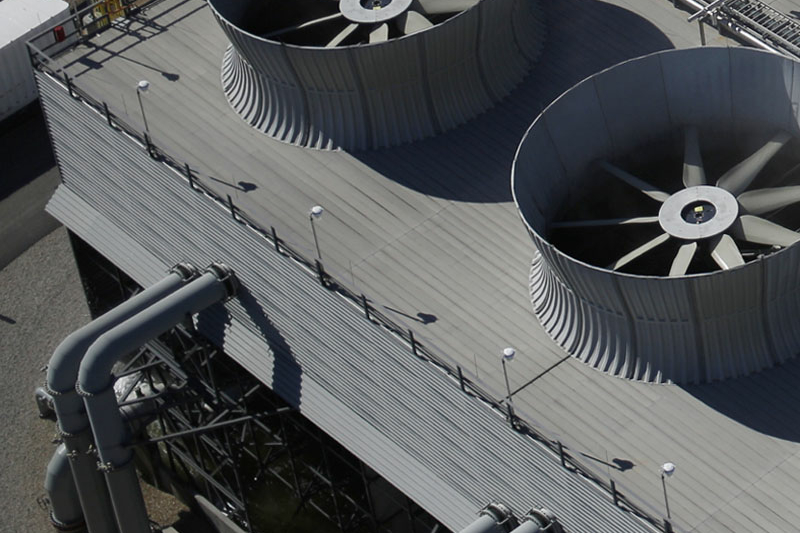US tax credit encourages investment in carbon capture and storage
Our overview of the Section 45Q tax credit helps investors understand how they may receive incentives to capture, store and use carbon dioxide and carbon oxide

This report looks at where we are in the journey toward implementing carbon capture and storage (CCS) technologies, with a focus on how laws and regulations in the US and Australia affect CCS adoption. We see two main ways that authorities will shape the CCS landscape, often acting as catalysts to speed implementation.
Our objective is to help companies understand the CCS landscape so they can pursue the best possible course to meet climate change mitigation goals and finance and properly structure CCS projects. To that end, this report has a section on US incentives for CCS, which zooms in on the 45Q tax credit, and a section on federal environmental and other protections in the US. The report has a section on Australian regulations affecting CCS, which covers CCS-specific rules and relevant environmental and other protections in the country. And it includes a brief section on the outlook for CCS M&A, which we believe will accelerate in coming years.
Our overview of the Section 45Q tax credit helps investors understand how they may receive incentives to capture, store and use carbon dioxide and carbon oxide

Although there are no CCS-specific federal environmental laws or regulations, the federal government has significant influence on how CCS is implemented in the US

Despite short-term headwinds, long-term trends are likely to drive increased investment in carbon capture and storage

by Tim Power
CCS projects are regulated by the Commonwealth, states and territories under CCS legislation and more general environmental laws and requirements


CCS projects are regulated by the Commonwealth, states and territories under CCS legislation and more general environmental laws and requirements
World in Transition Our views on changing dynamics in energy, ESG, finance, globalization and US policy.
The legal framework for encouraging and regulating carbon capture and storage (CCS) in Australia is divided among the Commonwealth and the states and territories.
Commonwealth CSS laws only apply to the offshore areas within the Commonwealth jurisdiction, while state and territory CCS laws apply to onshore and offshore projects within their jurisdictions. However, there is significant variation across states and territories—and though the relevant frameworks are comprehensive in some parts of the country, they are much less so in other parts.
Here we outline the legal and regulatory context for CCS in Australia and highlight important issues that participants may have to navigate in the market.
Policy support for CCS is gaining momentum. In September 2020, the Commonwealth published its "First Low Emissions Technology Statement—2020," a proposed greenhouse gas emissions reduction strategy that gives CCS a prominent role.
The "Statement" emphasizes the importance of CCS in sequestering greenhouse gas emissions generated in natural gas processing and hard-to-abate industries (such as steel and aluminum manufacturing). It proposes a "stretch goal" of reducing the combined cost of compression, transport and hub storage (this does not include capture processes) to AUD 20 per tonne of carbon dioxide equivalent. The "statement" also commits the government to providing AUD 50 million in research for R&D and for amending legislation to ensure CCS is eligible for support from the Emissions Reduction Fund, the Australian Renewable Energy Agency and the Clean Energy Finance Corporation (all three of these groups are already authorized to provide funding for other Commonwealth climate change objectives).
A number of energy companies have announced that they are interested in CCS, and the Victorian government has continued work on its proposed CarbonNet CCS project. It is important to acknowledge that CCS remains controversial in Australia, and as a result there may be resistance to legislative efforts called for in the "Statement." Nevertheless, the industry push for CCS as a means to reduce greenhouse gas emissions seems likely to continue for the foreseeable future.
The Commonwealth and some states have established CCS-specific regulations. Commonwealth CCS legislation only applies to offshore areas that are beyond state jurisdictions, which generally extend three miles offshore. State CCS-specific legislation applies onshore and offshore within their respective jurisdictions.
The Commonwealth regulates CCS in the Commonwealth marine area under the Offshore Petroleum and Greenhouse Gas Storage Act 2006 (Cth), also called the Offshore Act.
There are three main statutory requirements for getting CCS projects approved and operational under the Offshore Act:
The Offshore Act also creates other titles such as holding leases and research consents for scientific purposes, and for constructing and operating pipelines in the Commonwealth marine area. Importantly, it also contains a comprehensive statutory regime for the rehabilitation and restoration of CCS locations, and requires CCS operators to provide security to cover the cost of environmental and rehabilitation obligations.
The primary Commonwealth environmental and safety regulator for CCS is the National Offshore Petroleum Safety and Environmental Management Authority (NOPSEMA). NOPSEMA has extensive powers to issue remedial directions to CCS titleholders and operators. It is also responsible for approving and enforcing the environment plan that every CCS project must submit.
No greenhouse gas activity can commence before NOPSEMA has assessed and accepted an environment plan from the project titleholder that contains a description of the activity and its environmental risks and impacts, outlines relevant environmental performance standards, and provides an implementation strategy for the activity. In deciding whether to approve an environment plan, NOPSEMA considers whether it is appropriate for the nature and scale of the activity proposed, protects any potentially affected World Heritage properties, complies with the Environment Protection and Biodiversity Conservation Act 1999 (Cth), and provides for appropriate environmental performance outcomes. NOPSEMA publishes both submitted and final-form environment plans in full.
One notable shortcoming of the Offshore Act had been that the Commonwealth could not issue greenhouse gas injection licences for storage formations that traverse the maritime boundary of a state or territory. To address this issue, the Commonwealth Parliament passed amendments to the Offshore Act in May 2020 that remove this obstacle.
Only Victoria and Queensland have passed comprehensive legislation to regulate CCS, although South Australia's onshore petroleum and geothermal energy legislation includes rules about the storage of carbon dioxide in natural reservoirs. Both New South Wales and Western Australia prepared bills to regulate CCS in their states, but neither state parliament passed the bills.
The Victorian approach to regulating CCS in the coastal waters of the state is closely modeled on the Commonwealth Offshore Act.
In Queensland, two types of greenhouse gas titles are required for CCS exploration and production:
In all jurisdictions, titleholders are required to prepare work plans (called by various names, depending on the jurisdiction). In broad terms, the work plans must describe any proposed CCS activities, along with the necessary management and monitoring activities for the project. The regulator must approve the work plans. CCS legislation also deals with a host of other matters regarding land access, environmental protection, and priorities/liabilities concerning overlapping title areas (including when CCS titles overlap with other CCS titles and when CCS titles overlap with petroleum titles).
The largest commercial CCS project in the world is the Gorgon carbon dioxide injection project located at Barrow Island in the state of Western Australia. This project is regulated under Western Australian environmental law and the Barrow Island Act 2013 (WA).
The Gorgon project involves the development of two offshore gas fields. The reservoir carbon dioxide is separated from the natural gas stream prior to gas processing and liquefaction. Carbon dioxide is then injected into a geologic formation more than two kilometers beneath the surface of Barrow Island. The Western Australian Environmental Protection Authority requires that 80 percent of reservoir carbon dioxide (calculated on a five-year rolling average) be removed from gas processing operations on Barrow Island and injected into the designated geologic formation for carbon dioxide storage.
The Commonwealth retains responsibility for enacting and enforcing Australia's international environmental treaty obligations and protecting matters of national environmental significance. The main Commonwealth environmental legislation that can effect CCS projects is the Environment Protection and Biodiversity Conservation Act 1999 (Cth), also called the EPBC Act.
Australia's states and territories are primarily responsible for conducting environmental impact assessments and approving new projects, including CCS projects.
In the remainder of this section, we discuss Commonwealth and state and territory environmental assessment requirements.
The EPBC Act protects a number of "matters of national environmental significance." These include listed nationally threatened flora and fauna species and ecological communities, listed marine species, the Commonwealth marine area, world heritage properties, Ramsar Convention wetlands and places inscribed on the National Heritage List.
Under the EPBC Act, the proponent refers a CCS project the Commonwealth Minister for the Environment to determine whether the project must undergo environmental assessment and be approved by the Commonwealth government. The referral is placed on public exhibition for ten days before a decision is made.
The Commonwealth has entered into bilateral agreements with the states and territories to limit the potential for duplicating environmental assessments. For most onshore projects in Australia, proponents have only had to prepare environmental assessments that comply with relevant state and territory laws. The Commonwealth has relied on these assessments to decide whether to approve projects.
The situation for offshore projects is typically more complicated because the bilateral agreements do not apply to projects that extend outside the jurisdiction of the relevant state or territory. Thus CCS projects that involve activities in the Commonwealth marine area as well as ancillary infrastructure (such as transport pipelines) within a state or territory require bespoke, integrated environmental assessments that are agreed upon and conducted in coordination with both tiers of government. This is not required by law, but is typically done in practice.
The Commonwealth has recently undertaken a review of the EPBC Act, although as of the date of writing the government had not yet made the final review report public. However, in conjunction with this review, the Commonwealth is proposing amendments to the EPBC Act that will enable the Commonwealth, states and territories to enter into bilateral agreements under which only the state and territory will approve new projects under the Act. These amendments are presently before the federal parliament.
Land-use planning regulators typically administer the environmental assessment laws of each of the states and territories, although in Western Australia the Western Australian Environmental Protection Authority administers these laws. While the legislation and administrative practices vary from state to state, the environmental assessments usually include the following elements:
In Victoria and South Australia, a site used for CCS operations in accordance with the Greenhouse Gas Geologic Sequestration Act 2008 (Vic) and the Petroleum and Geothermal Energy Act 2000 (SA) does not require approvals or licensing from the respective state Environmental Protection Authorities. However, in Queensland, greenhouse gas storage activity is classified as an "environmentally relevant activity" under the Environmental Protection Act 1994 (Qld) and requires an approval called an environmental authority from the Department of Environment and Science.
All Australian state and territory environmental laws, including new laws that are scheduled to commence in Victoria in July 2021, have a general environmental duty. Broadly speaking, these duties require people to take all reasonable or practicable measures to reduce risks of harm to the environment. In Victoria, the proposed general environmental duty applies to all activities undertaken in the state, and the scope of the duty extends to reducing risks to human health and the environment from pollution. In most Australian states, noncompliance with the general environmental duty can give rise to civil penalties and enforcement actions undertaken by state environmental regulators or third parties. However, noncompliance with the proposed Victorian general environmental duty is also a criminal offence.
Thus CCS operations not only must address the regulatory and environmental management requirements of CCS legislation, but must also be assessed against and satisfy state Environmental Protection Authority duties, laws, policies and guidelines.
All relevant Australian legislation requires that proponents of CCS projects demonstrate to the satisfaction of the relevant Commonwealth or state regulators that the formations they plan to use can safely contain the target volume of the particular greenhouse gas substances they plan to store, injected at particular locations, without leaking or compromising the formation's geotechnical integrity.
All Australian CCS legislation empowers regulators to take administrative action when greenhouse gas substances leak or have the potential to leak following injection. These include powers to direct the proponent to suspend or cease injection, cancel the title and take reasonable steps to remedy the situation. If the regulator takes steps to remedy a situation, it can in some jurisdictions draw on the financial security provided by the proponent to cover the cost of those activities. In others, such as Victoria and Queensland, costs incurred by the state are a debt due by the titleholder.
However, only one Australian Act deals with the question of liabilities associated with leaks. The Gorgon LNG and CCS Project on Barrow Island in Western Australia is partly regulated under the Western Australian Barrow Island Act 2003 (WA). Under this Act, the State of Western Australia indemnifies the Gorgon joint venture parties from post-closure common law liability claims for loss or damage caused by the injection of greenhouse gas substances.
The Barrow Island Act also empowers the state to ask the Commonwealth to give notice that it is satisfied as to certain matters. These matters include the Commonwealth's satisfaction that the greenhouse gas substances stored in the formation are behaving as modeled, and that there is no significant risk of leakage, nor is there a significant risk of adverse impacts to the geotechnical integrity of the formation or the environment, or human health and safety. The state can only request this notice 15 years after the CCS injection activities cease.
Rules regulating the decommissioning and rehabilitation of CCS projects are promulgated by the Commonwealth as well as states and territories.
Under the Offshore Act, a CCS project may only be decommissioned after a site closing certificate is granted by the Commonwealth to the greenhouse gas injection licensee. In order to obtain a certificate, the licensee must model the behavior of the greenhouse gas substance injected (including its expected migration pattern and the short-term and long-term consequences of the substance on geotechnical integrity, human health or safety or the environment), and propose an approach for the Commonwealth to take in monitoring the greenhouse gas storage formation.
The licensee must provide security for the proposed program of monitoring operations. The Commonwealth can recover from the licensee any reasonable costs or expenses incurred in carrying out the program.
If the Commonwealth is satisfied that the greenhouse gas is behaving as modeled and there is no significant risk of major impact on geotechnical integrity, human health or safety, or the environment, the Commonwealth may declare that a closure assurance period has occurred. After issuing the declaration, the Commonwealth will indemnify the greenhouse gas injection licensee against any liability in relation to the formation. The closure assurance period must be a minimum of 15 years.
At the time of writing, the Commonwealth had recently published a consultation paper on enhancing the decommissioning framework under the Offshore Act. While the primary focus of the consultation paper is on the decommissioning framework for offshore oil & gas activities, many of the principles and options canvassed in the consultation paper could equally apply to offshore CCS projects, although it remains to be seen whether the Commonwealth will pursue this same approach.
Obligations to rehabilitate CCS operations are set out in the relevant CCS legislation or regulated under a condition of the CCS title or through a combination of both. The titleholder must rehabilitate the site of CCS operations and remove infrastructure before the title is relinquished or surrendered. In South Australia and Queensland, the regulator can also undertake rehabilitation actions itself and recover the costs of doing so from the titleholder.
In Victoria, the holder of the injection title is required to obtain a rehabilitation bond that is accepted by the Victorian Minister for Resources before commencing CCS operations. If the titleholder fails to remediate the land, the Minister may do all things necessary to do so and draw on that bond, as well as recover any costs incurred from the licensee.
***
Companies pursuing CCS strategies in Australia must navigate a complex network of Commonwealth and state and territory laws and regulations. And even as demand for CCS increases, the legal and regulatory situation in Australia is likely to evolve.
White & Case means the international legal practice comprising White & Case LLP, a New York State registered limited liability partnership, White & Case LLP, a limited liability partnership incorporated under English law and all other affiliated partnerships, companies and entities.
This article is prepared for the general information of interested persons. It is not, and does not attempt to be, comprehensive in nature. Due to the general nature of its content, it should not be regarded as legal advice.
© 2021 White & Case LLP